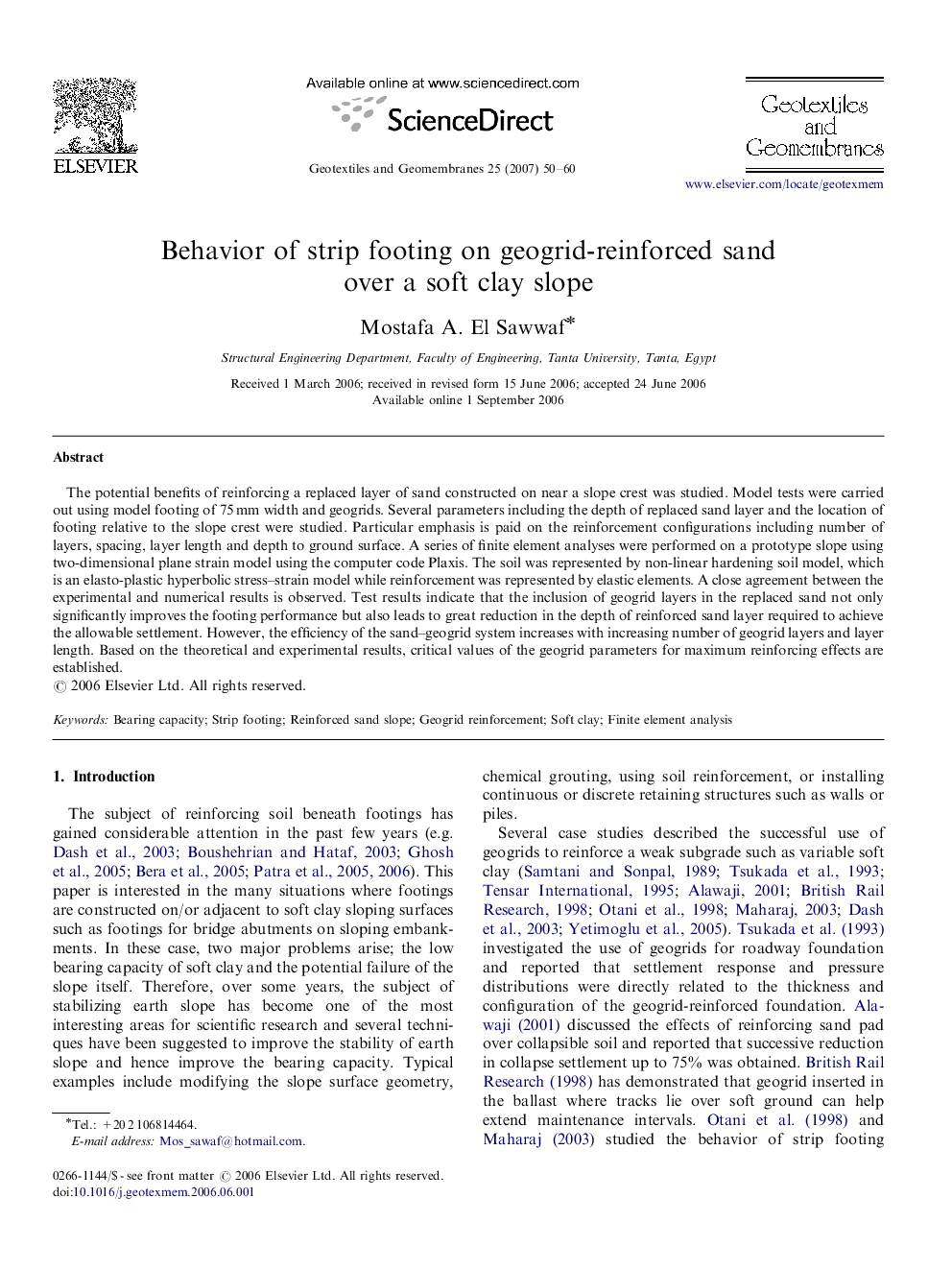| Article ID | Journal | Published Year | Pages | File Type |
|---|---|---|---|---|
| 274537 | Geotextiles and Geomembranes | 2007 | 11 Pages |
The potential benefits of reinforcing a replaced layer of sand constructed on near a slope crest was studied. Model tests were carried out using model footing of 75 mm width and geogrids. Several parameters including the depth of replaced sand layer and the location of footing relative to the slope crest were studied. Particular emphasis is paid on the reinforcement configurations including number of layers, spacing, layer length and depth to ground surface. A series of finite element analyses were performed on a prototype slope using two-dimensional plane strain model using the computer code Plaxis. The soil was represented by non-linear hardening soil model, which is an elasto-plastic hyperbolic stress–strain model while reinforcement was represented by elastic elements. A close agreement between the experimental and numerical results is observed. Test results indicate that the inclusion of geogrid layers in the replaced sand not only significantly improves the footing performance but also leads to great reduction in the depth of reinforced sand layer required to achieve the allowable settlement. However, the efficiency of the sand–geogrid system increases with increasing number of geogrid layers and layer length. Based on the theoretical and experimental results, critical values of the geogrid parameters for maximum reinforcing effects are established.
